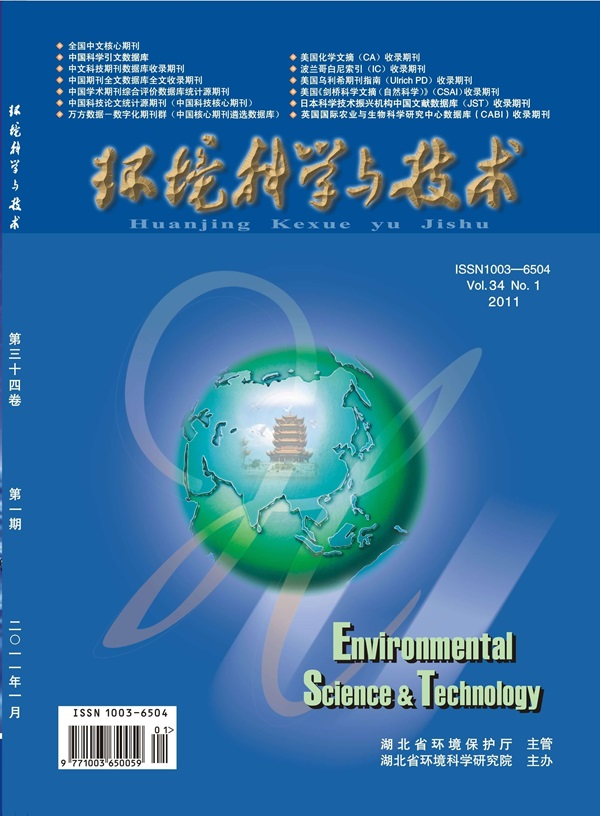多相缓冲:气溶胶硫酸盐形成及其主要途径的机制调节
IF 11.3
1区 环境科学与生态学
Q1 ENGINEERING, ENVIRONMENTAL
引用次数: 0
摘要
硫酸盐在气溶胶水相中的形成是一个ph敏感的大气化学过程,其形成途径受气溶胶酸度波动的显著影响。缓冲容量源于共轭酸碱对,可以抵抗外部扰动下气溶胶多相体系的pH变化。然而,多相缓冲在ph依赖的水硫酸盐形成机制中的调节作用仍未被探索。在这里,我们提出多相缓冲可以稳定气溶胶pH值,并进一步调节硫酸盐形成的主要途径。在本研究中,我们基于现场观测和理论计算,深入研究了瞬时缓冲容量β和硫酸盐形成的途径,并进一步引入气溶胶多相体系的总缓冲容量α,以量化整个缓冲过程中外部酸碱变化后缓冲约束pH的变化。NH4+/NH3剂(平均β 30.8 mol kg-1)在稳定气溶胶pH和调节硫酸盐形成途径转变方面的缓冲作用优于HNO3/NO3 -剂(平均β 15.1 mol kg-1)。Geos-Chem模拟和机器学习结果也验证了缓冲能力是硫酸盐形成的关键因素。除反应物外,缓冲剂和酸碱也可能是硫酸盐形成机制的重要因素。对酸碱变化的不同敏感性和对pH变化的区域特异性响应可以为酸碱排放措施的调节、区域气溶胶酸度的调节以及理解与pH相关的大气化学过程提供见解。本文章由计算机程序翻译,如有差异,请以英文原文为准。

Multiphase Buffering: A Mechanistic Regulator of Aerosol Sulfate Formation and Its Dominant Pathways
Sulfate formation in the aerosol aqueous phase represents a pH-sensitive atmospheric chemical process, with the formation pathways significantly influenced by the fluctuations in aerosol acidity. Buffer capacity, stemming from conjugate acid–base pairs, can resist pH changes in aerosol multiphase systems under external perturbations. However, the regulating role of multiphase buffering in pH-dependent aqueous sulfate formation mechanisms remains unexplored. Here, we propose that multiphase buffering can stabilize aerosol pH and further regulate dominant sulfate formation pathways. In this work, we delve into the instantaneous buffer capacity β and sulfate formation pathways based on field observation and theoretical calculation and further introduce the total buffer capacity α in the aerosol multiphase system to quantify the buffer-constrained pH change after the external acid/base variation during the entire buffering process. The NH4+/NH3 agent (average β 30.8 mol kg–1) shows a superior buffering effect in stabilizing aerosol pH and regulating sulfate formation pathway transition compared with the HNO3/NO3– agent (average β 15.1 mol kg–1). Geos-Chem simulation and machine learning results also validate the buffer capacity as a pivotal factor in sulfate formation. In addition to reactants, the buffer agents and acid/base can also be factors of concern for the sulfate formation mechanism. The diverse sensitivities to acid/base variation and the region-specific responses to pH change can provide insight into regulating acid and base emission measures, modulating regional aerosol acidity, and understanding pH-related atmospheric chemical processes.
求助全文
通过发布文献求助,成功后即可免费获取论文全文。
去求助
来源期刊

环境科学与技术
环境科学-工程:环境
CiteScore
17.50
自引率
9.60%
发文量
12359
审稿时长
2.8 months
期刊介绍:
Environmental Science & Technology (ES&T) is a co-sponsored academic and technical magazine by the Hubei Provincial Environmental Protection Bureau and the Hubei Provincial Academy of Environmental Sciences.
Environmental Science & Technology (ES&T) holds the status of Chinese core journals, scientific papers source journals of China, Chinese Science Citation Database source journals, and Chinese Academic Journal Comprehensive Evaluation Database source journals. This publication focuses on the academic field of environmental protection, featuring articles related to environmental protection and technical advancements.
 求助内容:
求助内容: 应助结果提醒方式:
应助结果提醒方式:


